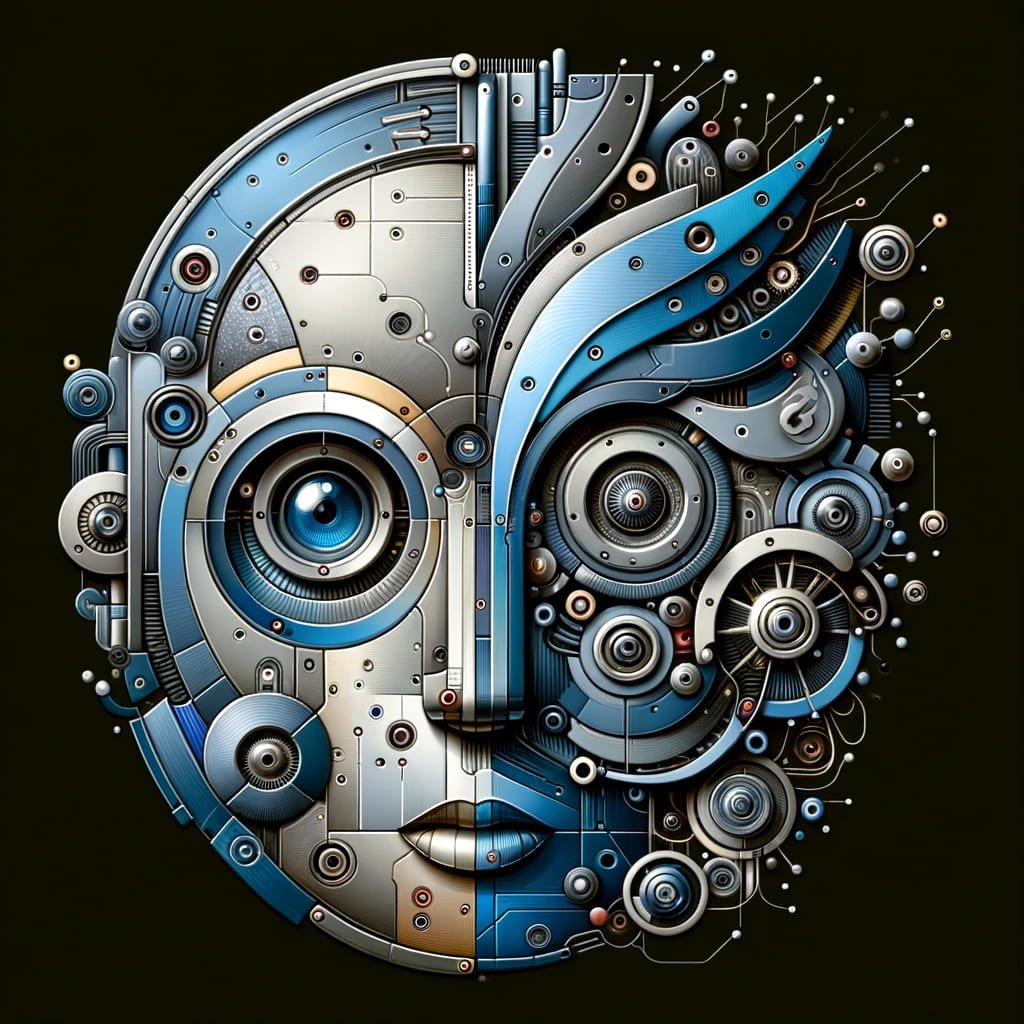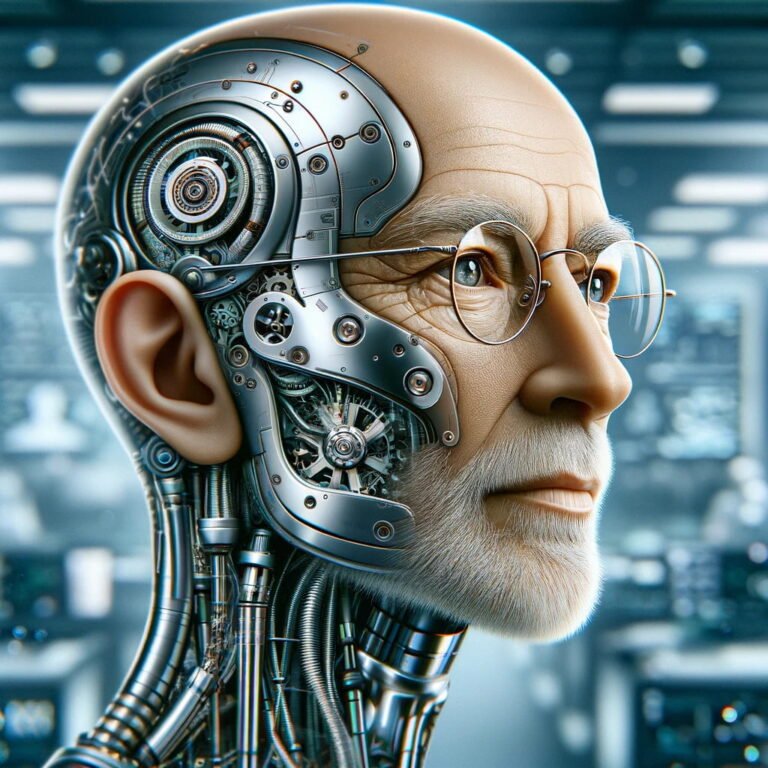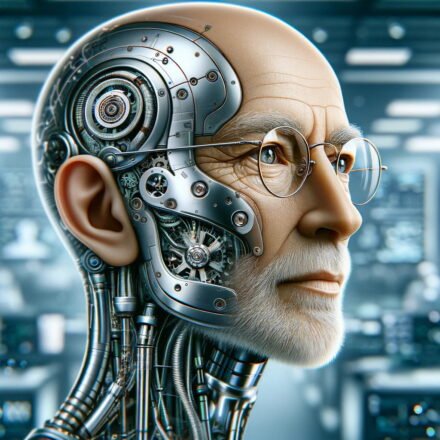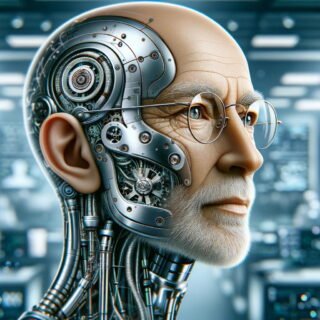What is OpenAI’s ChatGPT?
Most visitors to this page will already know about ChatGPT and have arrived out of curiosity. However, some will be here to gain knowledge.I am sorry for these knowledge seekers who might be disappointed because this website doesn’t answer their questions. However, as David’s Chat grows, I will rectify that.
Introducing ChatGPT
In ChatGPT’s own Words
With a little help from my custom instructions and being tidied up with Grammarly.
Using a chatbot to rework another chatbot’s work; who knew?
How would Google’s Gemini introduce ChatGPT?
Grammarly’s rework!
How would Microsoft’s Copilot introduce ChatGPT?
Grammarly’s rework!
How would Grammarly introduce ChatGPT?
ChatGPT, developed by OpenAI, is an advanced language generation model using the GPT-40 architecture. It can understand and respond to human language, making it a significant advancement in artificial intelligence.I asked for a brief introduction and got one. This was generated with Grammarly’s Generative AI, and there’s one thing to note, their generative AI results will need to be checked for grammar. The web app can do this for you.
Below is the article I got ChatGPT to write about itself, which was to be the mainstay of this page. Then I had a brainwave and added all the above. Before writing this article, I asked ChatGPT to produce an outline. This is shown under the content.
The Marvel of ChatGPT: Your AI Sidekick for Everyday Tasks
This content was written mainly by ChatGPT and may have some hallucinations—I will check it at some point and remove those I see. Also, I ran the generated text through Grammarly to remove the influence of American English and correct most grammatical errors.
It’s best practice to use effective prompts before using a chatbot like ChatGPT to write an article. In AI language models, ‘prompt engineering’ refers to crafting a well-structured and specific prompt that guides the model’s response. This can help you get the desired results from the AI.
Imagine conversing with a machine that understands and responds like a human. Sounds like sci-fi. Welcome to the magic of ChatGPT, where AI is changing how we interact with technology. From chatting about your day to helping with work, ChatGPT is here to impress.
What is ChatGPT?
ChatGPT, short for Chat Generative Pre-trained Transformer, is a brainchild of OpenAI. It’s an advanced AI model designed to understand and generate human-like text based on the input it receives. Think of it as a super-smart chatbot, but way more versatile and knowledgeable.
The Magic Behind the Curtain: How Does ChatGPT Work?
ChatGPT operates on the GPT-40 architecture, the latest in a series of language models. It’s powered by neural networks, like AI’s brain cells. These networks are trained using vast amounts of data from the internet, including books, articles, and websites. This training helps ChatGPT learn language patterns, context, and even some nuances of human conversation.
Practical Uses of ChatGPT
Everyday Applications:
ChatGPT can draft emails, help with homework, or keep you company during a late-night study session. It’s like having a personal assistant who’s always ready to help.
Business Applications:
ChatGPT is a game-changer for businesses. It can create content, handle customer service inquiries, analyze data, and more. Imagine boosting productivity without needing an extra pair of hands!
Creative Endeavors:
Writers and artists can use ChatGPT to brainstorm ideas, generate story plots, or even write poetry. It’s a tool that sparks creativity and helps overcome writer’s block.
Benefits and Limitations
Pros
: ChatGPT is efficient, available 24/7, and incredibly versatile. Whether you need information or a creative push, it’s there to assist.
Cons
: It could be better. Sometimes, it might give inaccurate answers or show biases based on the data it was trained on. Human oversight is essential to ensure the information it provides is accurate and fair.
The Ethical Side of AI Conversations
Privacy Concerns:
With great power comes great responsibility. Using ChatGPT involves sharing data raising concerns about privacy and data security.
Bias and Fairness:
ChatGPT can inherit biases from its training data like any AI. Ensuring it remains fair and unbiased is a continuous challenge.
Ethical AI Usage:
Deploying ChatGPT responsibly means considering its impact on jobs, privacy, and society. It’s about what it can do and how we use it.
The Future of ChatGPT
Technological Advancements:
The future is bright for AI. Expect even more advanced versions of ChatGPT with better accuracy and understanding.
Integration with Other Technologies:
Picture ChatGPT combined with IoT or virtual reality. The possibilities are endless and exciting.
AI in Everyday Life:
From smart homes to personal health assistants, ChatGPT and similar AI technologies will become integral to our daily routines.
Conclusion
ChatGPT is more than just a chatbot. It’s a powerful tool transforming how we interact with technology. Its applications are vast, from helping with mundane tasks to sparking creativity. As we embrace this technology, it’s crucial to use it responsibly, considering the ethical implications.
The Outline for the Article on ChatGPT
Introduction
- Hook: Imagine conversing with a machine that understands and responds like a human. Welcome to the world of ChatGPT!
- Brief Overview: What ChatGPT is and why it’s making waves in the tech world.
What is ChatGPT?
- Definition: A quick rundown of ChatGPT, developed by OpenAI.
- How It Works: The basics of its underlying technology (GPT-4 architecture).
- Evolution: A short history from GPT-1 to GPT-4.
The Magic Behind the Curtain: How Does ChatGPT Work?
- Neural Networks and Training: An easy-to-grasp explanation of neural networks and how ChatGPT is trained.
- Data Sources: Where ChatGPT gets its knowledge from (large datasets, internet scraping, etc.).
Practical Uses of ChatGPT
- Everyday Applications: From drafting emails to tutoring sessions.
- Business Applications: Content creation, customer service, data analysis, etc.
- Creative Endeavors: Story writing, brainstorming, generating poetry, etc.
Benefits and Limitations
- Pros: Efficiency, 24/7 availability, versatility.
- Cons: Accuracy issues, potential biases, and the need for human oversight.
The Ethical Side of AI Conversations
- Privacy Concerns: Data security and user privacy.
- Bias and Fairness: Addressing biases in AI and ensuring fair responses.
- Ethical AI Usage: Responsible for the deployment of ChatGPT in various sectors.
The Future of ChatGPT
- Technological Advancements: What’s on the horizon for AI and language models?
- Integration with Other Technologies: Combining ChatGPT with IoT, VR, and other tech.
- AI in Everyday Life: How ChatGPT and similar technologies will shape our daily lives.
Conclusion
- Recap: Summarizing the magic of ChatGPT and its impact.
- Call to Action: Encouraging readers to explore and interact with ChatGPT themselves.



